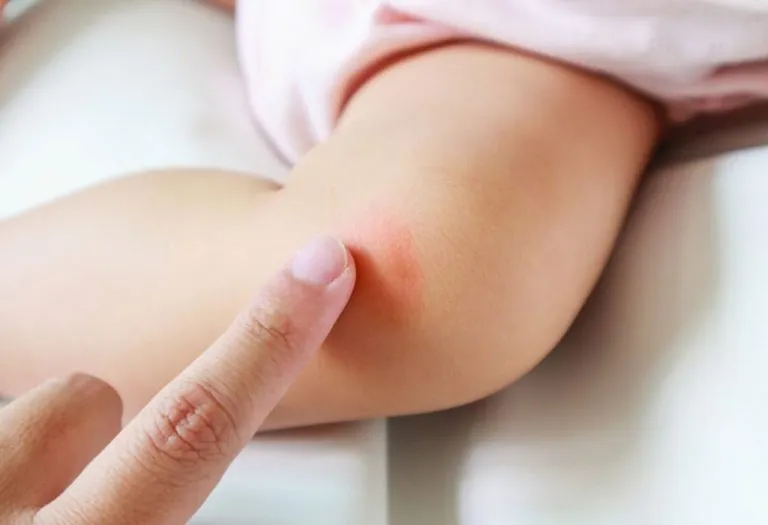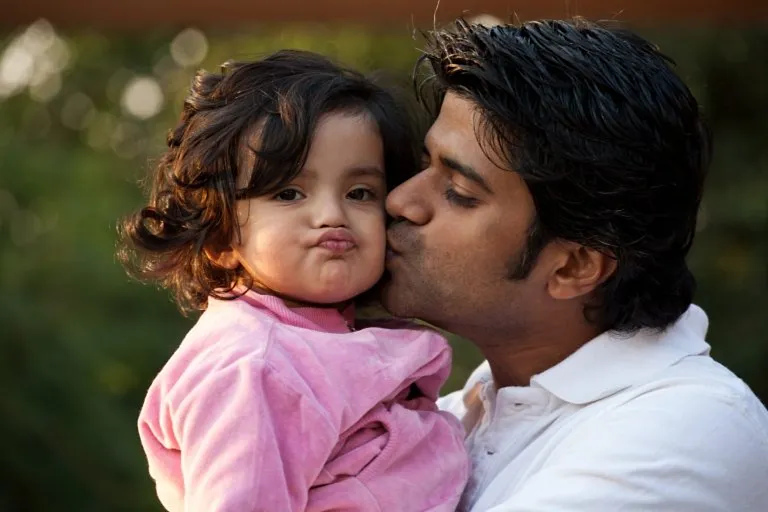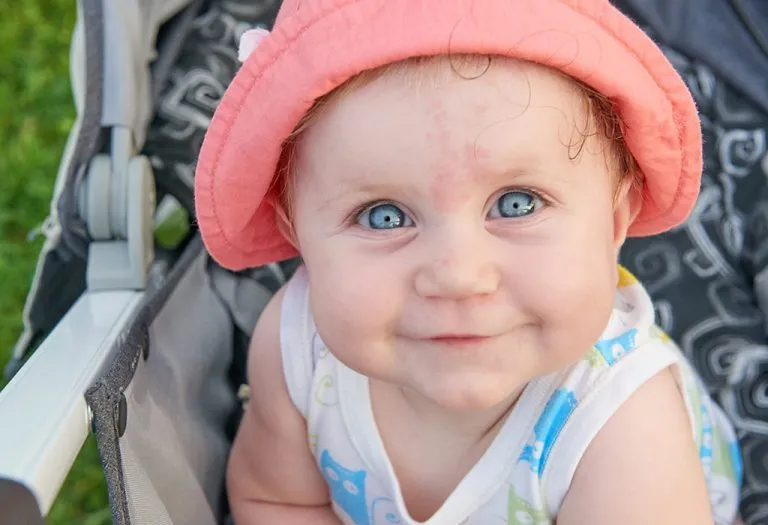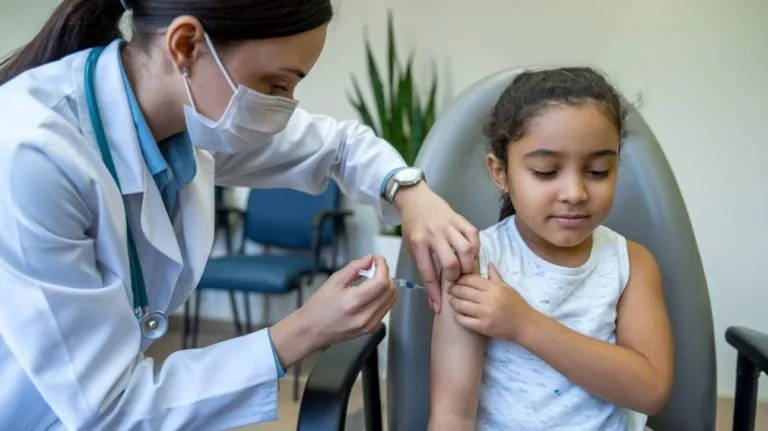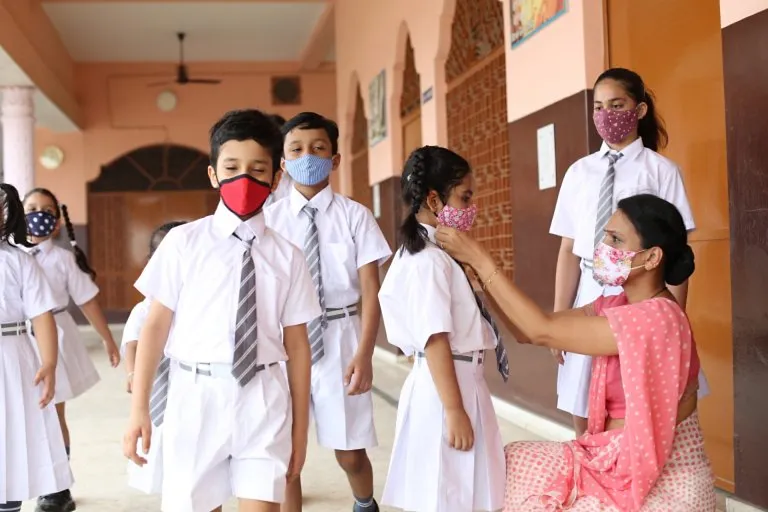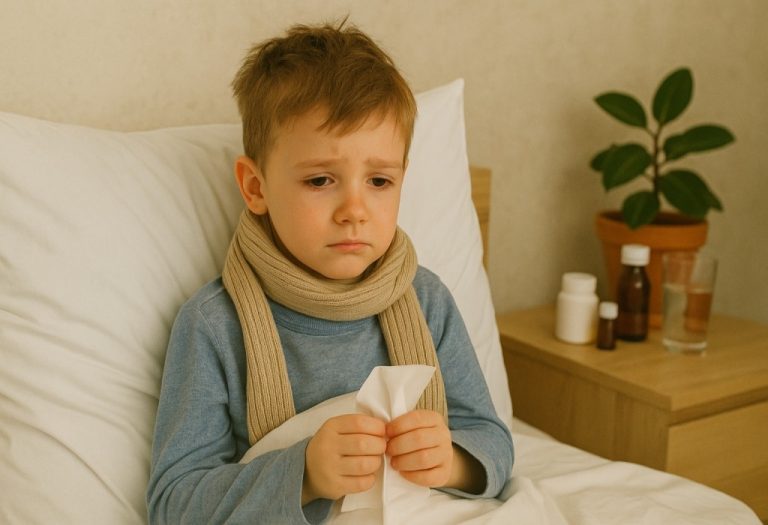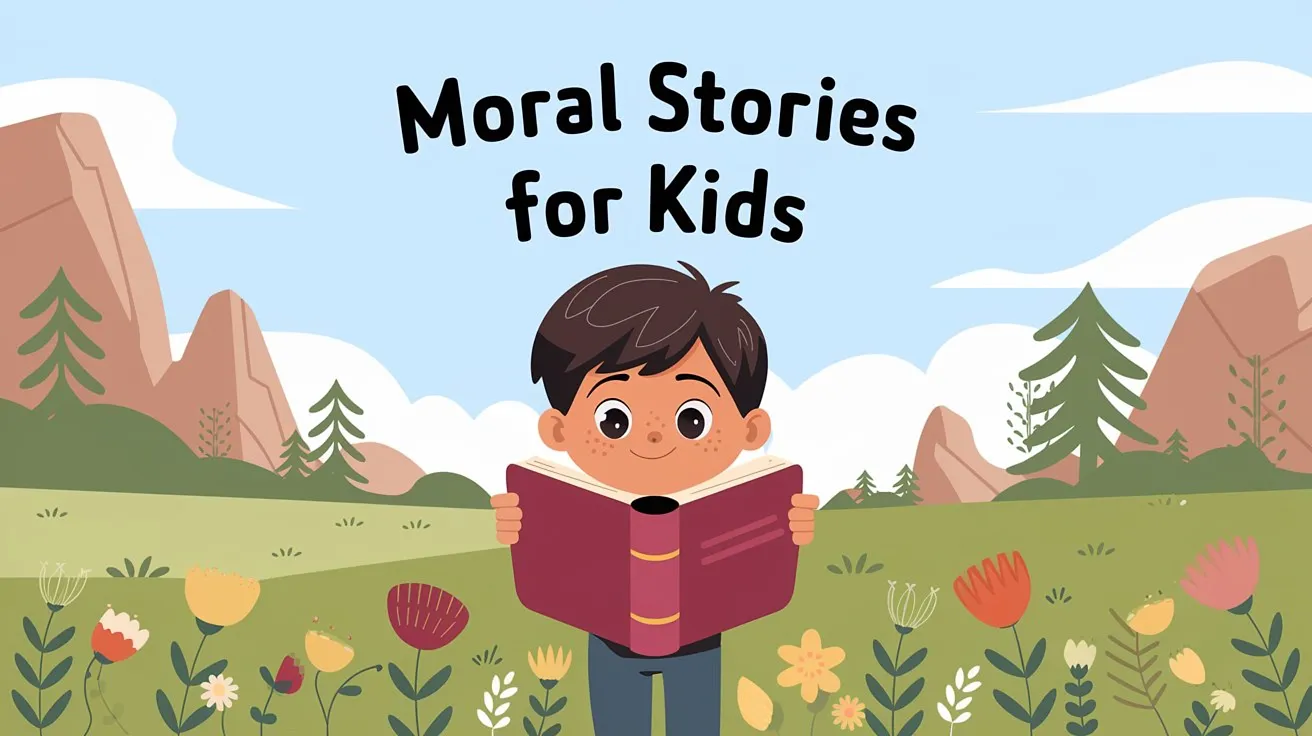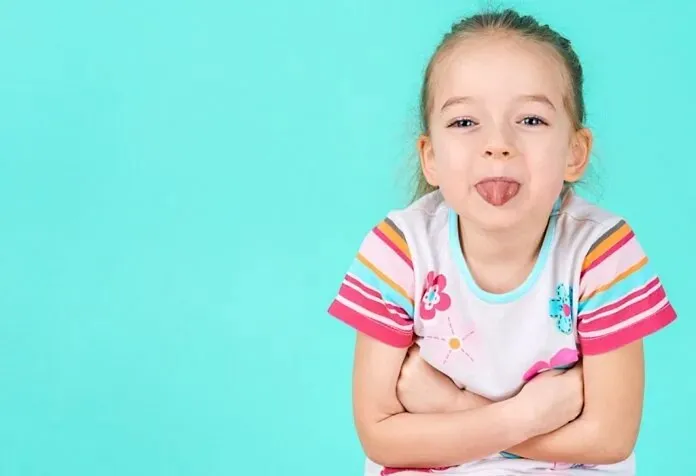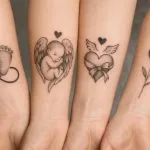Folliculitis in Babies and Kids – Causes, Symptoms, and Treatment
- What Is Folliculitis?
- Is Folliculitis Contagious, and What Does It Look Like?
- Which Children Are at Greater Risk for Folliculitis
- What Causes Folliculitis in a Child?
- What Are the Symptoms of Folliculitis in Children?
- Diagnosis
- Treatment of Folliculitis in Children
- How Can You Help Your Child?
- Natural Remedies to Treat Folliculitis on Baby and Kids
- Ways to Prevent Folliculitis in Children
- When to See a Doctor
- FAQs
Parents are usually extra sensitive and careful when it comes to their kids, especially babies. Any small discomfort to their little ones is enough to warrant an immediate visit to the doctor. Every ailment of the babies is critical for parents, and they may panic seeing their baby in even little pain. However, this panic can be avoided if parents know and understand the details of the illness or ailment, its symptoms, and preventive measures. One such infection is folliculitis in babies, toddlers and kids, which can be controlled and treated with home remedies in its initial stages.
What Is Folliculitis?
Folliculitis, as the name suggests, is an inflammation or infection commonly occurring in the hair follicles. Acne-like red bumps or rashes characterize this infection at the base of the hair follicle, which may be accompanied by itching. The rashes or tiny pouches can have pus, and may even be mildly painful. This common infection usually occurs in the hair follicles of arms, legs, buttocks and thighs.
Folliculitis is usually caused by a bacterial infection, and in most cases, it is cured by itself in a few days (7 to 10 days). However, in some cases, the rashes can turn into boils, which require an antibiotic course as treatment.
Is Folliculitis Contagious, and What Does It Look Like?
Yes, folliculitis in toddlers and babies can be contagious if it’s caused by bacteria like Staphylococcus aureus or fungi (1). It can spread through direct contact with an infected area or by sharing items like towels or washcloths. Proper hygiene and keeping the baby’s skin clean can help prevent its spread.
In babies and kids, folliculitis appears as small red or white bumps around the hair follicles, often on the scalp, arms, legs, or buttocks. These bumps may be itchy or tender and can sometimes be filled with pus. The affected skin might look like a rash or have a slightly crusty appearance if the bumps break open.
Which Children Are at Greater Risk for Folliculitis
Folliculitis can affect children of all ages, but certain factors can increase the likelihood of developing this skin condition. Understanding which children are more susceptible can help in taking preventive measures and seeking timely treatment.
- Kids who have compromised immune systems due to medical conditions like diabetes or HIV or those undergoing treatments such as chemotherapy are more vulnerable to infections, including folliculitis.
- Children who participate in sports or activities that cause frequent sweating, skin friction, or the use of shared equipment (like gym mats or helmets) are at higher risk for developing folliculitis.
- Kids who suffer from skin disorders such as eczema, acne, or dermatitis have disrupted skin barriers, making it easier for bacteria or fungi to invade and cause folliculitis.
- Infrequent bathing, sharing personal items like towels, and inadequate skin care can increase the chances of folliculitis, especially forms caused by contagious bacteria or fungi.
What Causes Folliculitis in a Child?
Folliculitis is caused by an infection happening due to pathogenic microorganisms entering the skin, such as the bacteria Staphylococcus aureus, viruses, or fungi such as yeast, which dwell on the skin. These microorganisms are usually harmless; however, when there is a or bruise, they enter the skin and cause infections such as folliculitis.
A few causes of folliculitis in a child are (2):
- Skin injuries like scratches, cuts, or bruises, resulting in infections
- Skin damage due to friction caused by tight-fitting clothes or during sports
- Swimming in unhygienic pools of water, or those that are not properly treated with chlorine
- Blockage at the base of hair follicle due to dirt, oil, or skincare products
- Plucking of hair
- Weak immunity or resilience due to some disease
- Prolonged use of antibiotics or steroids
- Ingrown hair
What Are the Symptoms of Folliculitis in Children?
Folliculitis looks like red rashes, or acne-like bumps. These rashes or bumps develop into furuncles gradually, which are pus-filled boils. Sometimes, when many hair follicles get infected, they form carbuncles, which are large painful bumps or swellings with many pus-discharging boils. This is an indication of a deep-layer infection, and may cause a fever.
Some of the common symptoms of folliculitis in children are:
- Red bumps around the base of the hair follicle
- Red bumps looking like acne on scalp, face, arms, legs, back, buttocks, and thighs
- The gradual development of pus-filled boils
- Itching on the affected areas
- Mild pain in the boils or rashes
- Mild fever
- Upset stomach
Diagnosis
As folliculitis looks like rashes or acne, people can sometimes get confused and might take one for the other. There are many kinds of skin infections caused by different things that may have similar symptoms. So, an accurate diagnosis of folliculitis can be made by a doctor only. After a thorough physical examination of the skin and its condition, a doctor diagnoses the infection and prescribes the treatment (3). Usually, just a physical assessment is enough. However, in a few cases where there is discharge from the boils, the doctor may ask for a laboratory culture test or examination of the discharge to determine the infective microorganism accurately.
Treatment of Folliculitis in Children
In children who have strong immunity, folliculitis tends to go away by itself in a period of seven to ten days. If the rashes or bumps turn into carbuncles or boils in some cases, then the parents need to consult a doctor for folliculitis infant treatment. Below are the treatment options the doctor may prescribe for the children with folliculitis (4):
- Topical antibiotics – The doctor may prescribe topical antibiotics such as cream or ointments, depending on the severity of the folliculitis in babies.
- Topical antiseptics – The doctor may prescribe topical antiseptics like gels, solution, or soaps to reduce the inflammation or infection.
- Oral antibiotics – Oral antibiotics or medicines may be prescribed by the child’s doctor in severe infection cases or if the child has a fever.
- Bleach bath – In a few cases, the doctor may prescribe a bleach bath for the child to prevent the bacterial folliculitis from reoccurring.
How Can You Help Your Child?
Parents are the main source of care and comfort for a child suffering from folliculitis. The doctor prescribes the treatment, but the parents are the ones who perform their home care, and can thus ensure a speedy recovery for their child. Some home care advice that can help in the speedy healing of folliculitis in children are:
- You can apply a warm compress for 15 to 20 minutes on the body areas infected with sores. This may reduce the itch and inflammation, especially in cases of folliculitis on the child’s bottom. This can be repeated three times a day.
- Bathe the child daily, and dress him in clean clothes.
- Gently wash the affected area with antibacterial soap and warm water, and then wipe it clean to dry the area.
- Dressing the child in soft, loose, cotton clothes. This will ensure there is no friction, and the child is comfortable.
- Wash the child’s clothes with a disinfectant.
- Discourage the child from squeezing the bumps or scratching them to avoid the spread of infection, especially in cases of eosinophilic pustular folliculitis of infancy.
Natural Remedies to Treat Folliculitis on Baby and Kids
Natural remedies may be considered, in order to relieve the folliculitis symptoms in children. However, do remember to take your child’s doctor’s advice before choosing a home remedy to try. Some natural remedies to treat folliculitis in babies and kids are:
1. Tea Tree Oil
Tea tree oil is known for its antimicrobial properties that may help prevent bumps and pus caused by folliculitis. However, pure tea tree oil is strong for kids, so remember to dilute it with other natural oils such as almond or coconut oil before applying it to your child’s soft skin.
2. Neem
Neem leaves are also known for their antibacterial, antifungal, and antiviral properties. They can be boiled in water, and then the strained water, or a paste of boiled neem leaves, can be applied on the affected areas. Do remember to cool the paste or neem water!
3. Apple Cider Vinegar
Apple cider vinegar is known for its antimicrobial effect on the Staphylococcus aureus bacteria, which is responsible for causing folliculitis. Apple cider vinegar, mixed with two parts of water, is applied to the affected area, left for 10 minutes, and then rinsed off.
4. Aloe Vera Gel
Aloe vera gel is known for its antiviral and anti-inflammatory properties to reduce the inflammation and itching caused due to folliculitis. Fresh aloe vera gel extracted from the aloe vera plant can be applied to infected areas. It should be left for 10 minutes, and then the area should be rinsed off with warm water.
5. Turmeric
Several researchers have found that turmeric is effective against the Staphylococcus aureus bacteria. Apply a paste of turmeric with water on the affected area, leave it for 20 minutes, and then rinse off completely.
Ways to Prevent Folliculitis in Children
Parents often worry about their kid who is at risk of getting folliculitis easily if he plays outside in dust and mud, or gets hurt frequently. Parents can easily prevent folliculitis in their children by taking these precautions (5):
- Ensuring a daily bath and clean clothes
- Regular hand-washing, especially after play
- Cleaning cuts and bruises immediately with antiseptic lotion, and applying bandages to cover them
- Disinfecting and cleaning the bathtub regularly
- Swimming in hygienic pools
- Keeping the kids away from adults suffering from folliculitis
- Using separate towels, combs, blankets, etc.
- Avoiding tight clothes
When to See a Doctor
The child should be taken to a doctor if the folliculitis doesn’t heal itself in a few days, or is not subsisting after following self-care measures (6). Immediate medical consultation should be sought if the infection spreads to other body parts, or the rashes start oozing pus. When the bumps are itchy or painful, or the child has a large red area with multiple pus-discharging boils, it is time to visit the doctor.
FAQs
1. Can folliculitis in babies be mistaken for another skin condition?
Yes, folliculitis in infants can sometimes be mistaken for other skin conditions like baby acne, heat rash, or eczema. The small red or white bumps around the hair follicles may look similar to these conditions, making it essential to consult a pediatrician for an accurate diagnosis.
2. Is folliculitis in babies painful or itchy?
Folliculitis in babies can be both itchy and painful, depending on the severity. The affected area might be tender to touch, and the itchiness can cause discomfort, leading to irritability in babies. Applying soothing creams recommended by a doctor can help relieve these symptoms.
3. Can folliculitis lead to scarring in babies?
While folliculitis in babies usually heals without complications, severe or untreated cases can potentially lead to scarring. If the bumps become inflamed, burst, or are scratched repeatedly, they may leave behind small scars or dark spots on the skin. Early treatment and preventing your baby from scratching the affected area can help minimize this risk.
4. Can certain bathing products trigger folliculitis in babies?
Yes, certain bathing products containing harsh chemicals, fragrances, or dyes can irritate your baby’s skin and trigger folliculitis. Opt for gentle, hypoallergenic products specifically formulated for babies, and avoid using adult shampoos or soaps that might be too strong for their delicate skin.
Folliculitis is a common occurrence in kids, and it usually gets cured by itself in a few days with proper precautions. However, it can become severe if not treated properly. Identifying the symptoms at the nascent stage and taking proper treatment are important to ensure it doesn’t become severe.
References/Resources:
1. Stevens. D, Bisno. A, Chambers. H, Everett. E, et al.; Practice Guidelines for the Diagnosis and Management of Skin and Soft-Tissue Infections (Clinical Infectious Diseases); Oxford Academic; https://academic.oup.com/cid/article/41/10/1373/345303; November 2005
2. Sun. K, Chang. J; Special types of folliculitis which should be differentiated from acne (Dermato-Endocrinology); National Library of Medicine; https://www.ncbi.nlm.nih.gov/pmc/articles/PMC5821164/; September 2017
3. Folliculitis, Furuncles, and Carbuncles in Children; Stanford Medicine; https://www.stanfordchildrens.org/en/topic/default?id=folliculitis-furuncles-and-carbuncles-in-children-90-P01899
4. Folliculitis; Nationwide Children’s Hospital; https://www.nationwidechildrens.org/conditions/folliculitis
5. Folliculitis, Furuncles, and Carbuncles in Children; University of Rochester Medical Center; https://www.urmc.rochester.edu/encyclopedia/content.aspx?ContentTypeID=90&ContentID=P01899
6. Folliculitis; Cleveland Clinic; https://my.clevelandclinic.org/health/diseases/17692-folliculitis
7. Children and Folliculitis, Boils, and Carbuncles; Children’s Hospital of Philadelphia; https://www.chop.edu/conditions-diseases/children-and-folliculitis-boils-and-carbuncles
Also Read:
Scalp Problems in Kids
How to Deal With Dandruff in Kids?
Natural Remedies for Cradle Cap in Babies
Premature White and Grey Hair in Children
Was This Article Helpful?
Parenting is a huge responsibility, for you as a caregiver, but also for us as a parenting content platform. We understand that and take our responsibility of creating credible content seriously. FirstCry Parenting articles are written and published only after extensive research using factually sound references to deliver quality content that is accurate, validated by experts, and completely reliable. To understand how we go about creating content that is credible, read our editorial policy here.






